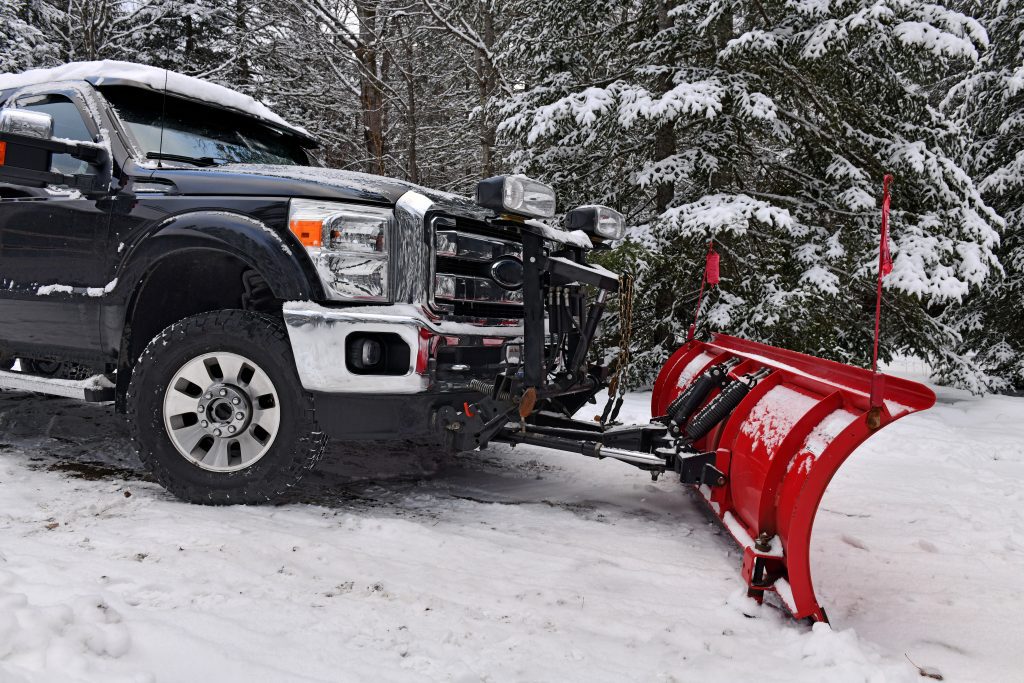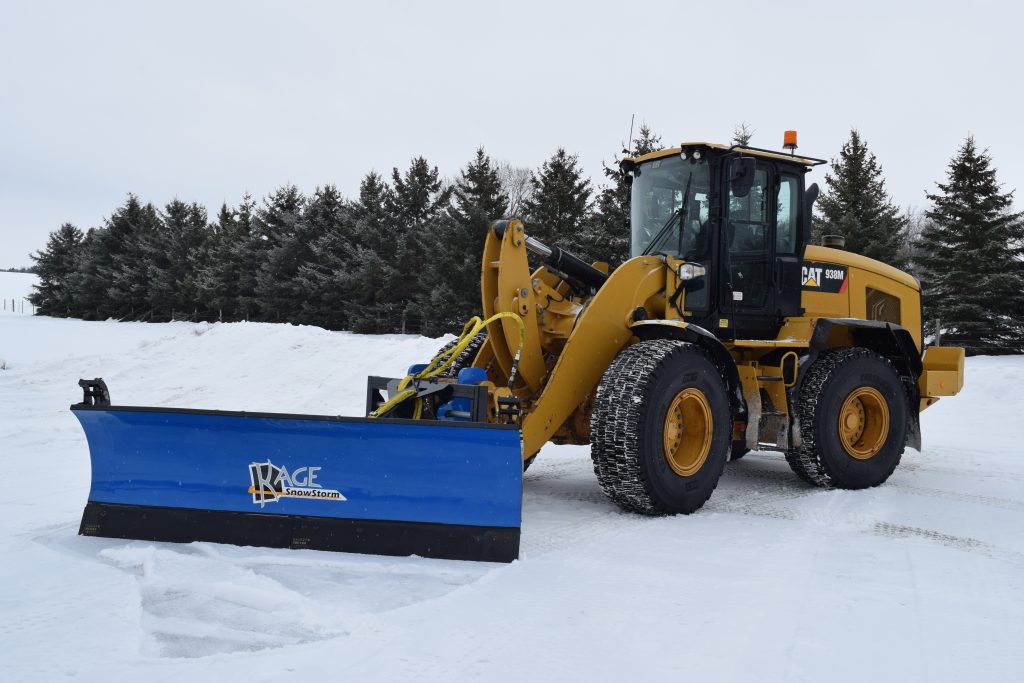Angle plowing is a critical component to snow removal – especially when the snow is wet. An angle plow is used to roll snow off to the side as the plow passes. Pushing snow straight forward often results is snow spilling off both edges – particularly when using a snow blade. Snow pushers can handle more snow going straight due to the containment boxes, but there are still limits, which is why some snow pushers still offer the ability to angle plow.
Why does the angle of a plow matter?
- The plow angle affects the direction the snow is rolled off the snow blade.
- Smaller plow angles allow blade can clear wider swaths.
- Smaller plow angles increase the risk of dribbles off both sides.
- Greater plow angles improve the ability turn sharp corners with the plow.
- Greater plow angles reduce the amount of power needed to move the snow.
- Greater plow angles increase side-to-side pressure on vehicle.
How far can you angle a snow blade?
Different snow blade makes and models offer different ranges of plow angles. The largest plow angle available is 36 degrees, which is only offered on the KAGE SnowStorm 2-in-1 blade and box system.
Most plows angle between 0 and 30 degrees. However, it is not uncommon to find 35-degree angling from a snow plow.
Wing blades or rear mounted snow blades can and should also offer the ability to angle. Back blades are often designed to compliment front plows, extending the width of the plowing swath per pass. They can also be helpful for bench winging along curbs and ditches.
Be aware that too great of an angle on a pull plow can cause control problems with your vehicle by pulling the back of your vehicle in the opposite direction of the snow discharge.
For example, KAGE’s ShadowBlade is a back blade for tractors that weigh over 9500 pounds, and its optimal plow angle is roughly 17 degrees.
How far can you angle a snow pusher?
Most snow pushers are designed for straight pushing only, so they would have a plow angle of 0 degrees. With that being said, all 3 of KAGE’s 2-in-1 systems can still angle plow, even with the snow box attached. If fact the side panels of the boxes do not change the plow angles at all.
- KAGE SnowStorm System = Up to 36 degrees of Angle Plowing
- KAGE SnowFire System = Up to 35 degrees of Angle Plowing
- KAGE SnowDozer System = Up to 34 Degrees of Angle Plowing
How are plow angles adjusted?
Plow angles are adjusted either through the use of hydraulics or by manually setting the plow angle.
Hydraulic angle plows allow you to adjust the angle of your plow throughout the plowing process without having to get out of the cab of your truck, skid steer, tractor, wheel loader or telehandler. However, with hydraulics generally come more opportunities for things to break or malfunction.
Manually adjusted angle plows reduce the number of breakable parts and thus the maintenance involved, but they are are also very limiting. If you need to change the angle of your plow, it becomes a much slower process and you’ll generally need tools to do so.
What role does oscillation have in angle plowing?
If you’ve ever tried to plow with a snow bucket, you know that even turning corners can be problematic when plowing – especially if there is a crown or a slope to the surface you’re plowing. Those angles often result in a corner of the bucket digging into the ground or a corner lifting off the surface and leaving snow behind.
The same applies to angle plows if the plows do not offer enough oscillation (the ability to tip side to side). Through oscillation, the snow blade or box plow is able to maintain contact with the substrate on both edges of the plow, giving it better contact with the road, driveway or parking lot at all times. It also helps prevent uneven wear on your cutting edges.
All KAGE front plows offer 6 degrees of oscillation in each direction.
When should you avoid angle plowing?
It makes sense that when you are trying to push snow away from obstacles that you would angle the plow away from that obstacle, but that’s not always the best idea. Keep in mind that when you angle the plow, you also change the direction of the force against it.
For example, if you are pushing snow straight forward, the resistance transfers straight through the blade into the vehicle. When the blade is angled, the snow still wants to push directly into the blade, which can force it sideways. Therefore, if you try to angle snow away from an obstacle, such as a car, it can actually push the blade and front of the vehicle towards the car!








Recent Comments